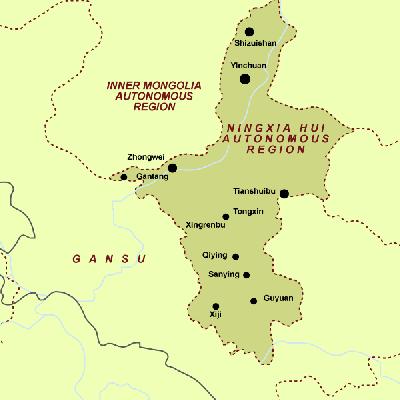| Map |
|
|
Ningxia
Nlngxia has a marked continental climate. It has a mean annual temperature of 5-9oC and a mean annual precipitation of 180-680 mm.
It is divided into 4 prefecture-level cities, 2 county-level cities and 14 counties, with a population of 5.62 million as of 2000, one third of which are Huis and the rest are from the Manchu, Mongolian, Tibetan and Han ethnic groups.
Roast lamb, handpicking mutton, sweet and sour fish and the Huis' special food, etc.
Xintianyou (a folk song genre which originated in North Shaanxi), Hua'er (a folk song genre popular in Gansu, Qinghai and Ningxia), etc.
Ning is the short shortened form for the Ningxia Hui Autonomous Region, with Yinchuan as its capital city. The Yellow River flows through its northern part. It has a long history of diverting water from the Yellow River for irrigation. As far back as some 2,000 years ago, the people in this area had taken advantage of the unique natural conditions to dig canals to divert the water into farmland. There are crisscrossed irrigation channels, the fertile soil, high yield rice and wheat, delicious and sweet watermelon and fruit on the Yinchuan Plain. These make the Yinchuan Plain known as "the lush southern-type fields in the northern frontier; land teeming with fish and rice". The resources of coal and gypsum hold an important position in China.
Ningxia has a long history. There are a lot of historic relics. The places of interest are Ming-Dynasty (1368-1644) Great Wall at the Sanguan Pass, Mausoleums of Western Xia Kingdom (Chinese Pyramids), the Haibao Pagoda, the Nanguan Muslim Mosque, the Chengtian Temple, and 108 towers in the Qingtong Gorge, etc. |
||||
 |
 Geography
Geography